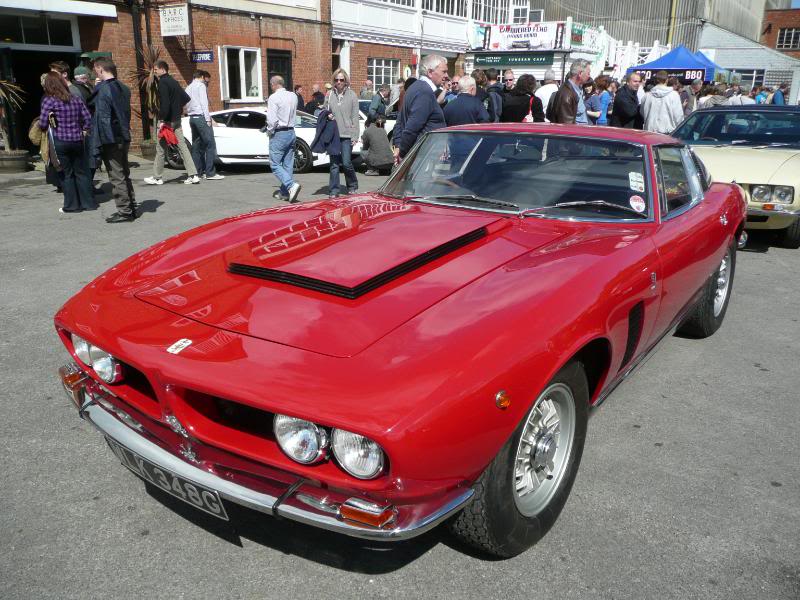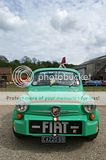
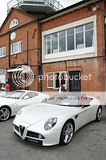
AutoItalia magazine organise three events throughout the year for Italian cars, at Brooklands, Stanford Hall and Gaydon. I’ve never been to the middle of these venues (yet), but having enjoyed a Gaydon event back in 2007, decided to sample the Brooklands one a couple of years ago and have now made it a firm fixture in my diary. On the evidence of the 2010 event, it would seem that I am far from alone as this year saw a far greater number of cars and event visitors even than in previous years. Not only that, but many of the cars were particularly rare and were models that I had simply not seen before. Indeed, it would almost be quicker to itemise the cars that were not here than those that were, which made for a fascinating and particularly enjoyable day out. Despite that huge number of photos that both Dan and I took, there are still many things that we missed or failed to record. Here is what we did capture.
ABARTHIt will surprise no-one to learn that there were a lot of examples of recently reborn Abarth at the event, with plenty of Punto and 500 models.


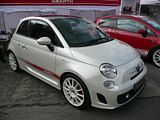
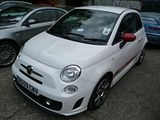
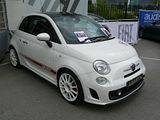
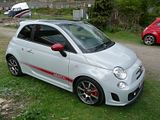
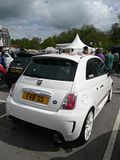
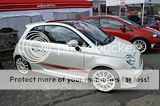

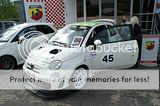
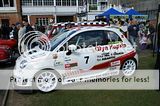 What may have been more of a surprise was the diverse range of older Abarth cars from the 1950s and 1960s that were also in attendance.
What may have been more of a surprise was the diverse range of older Abarth cars from the 1950s and 1960s that were also in attendance.
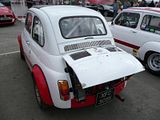

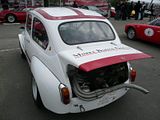
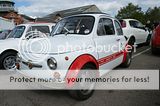
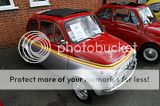
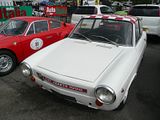
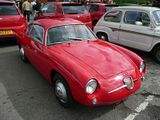
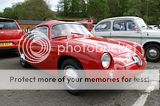
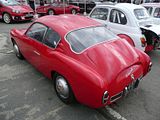
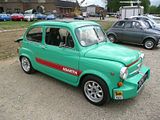
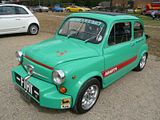
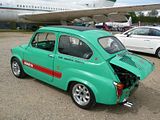



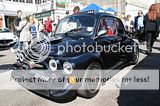
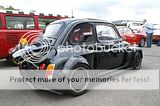 Although most of the classic Abarth were Fiat based, there were also some Simca models, such as this Abarth-Simca 2000.
Although most of the classic Abarth were Fiat based, there were also some Simca models, such as this Abarth-Simca 2000.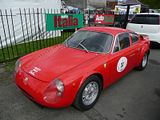
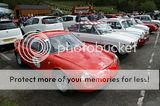 ALFA ROMEO
ALFA ROMEOOldest car at the event, and one of my absolute favourites was this splendid 6C 1750.
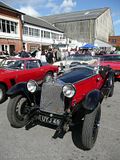
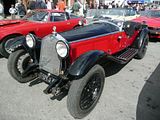
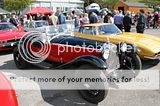
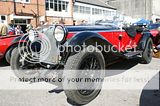 The first Giulietta dates back to 1955. The very pretty Coupe was complemented by a Berlina model, as well as lovely Spider. This latter later became a Giulia, though the styling changed little in the process.
The first Giulietta dates back to 1955. The very pretty Coupe was complemented by a Berlina model, as well as lovely Spider. This latter later became a Giulia, though the styling changed little in the process.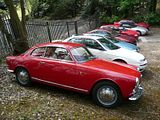
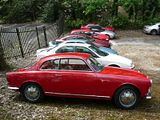
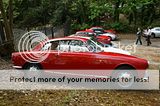
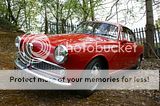

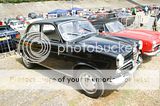
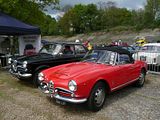
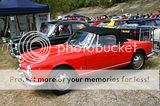 Succcessor to this range was the Giulia and here is the Berlina model.
Succcessor to this range was the Giulia and here is the Berlina model.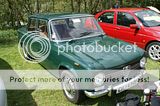 This Giulia SS was a rare car even when it was new.
This Giulia SS was a rare car even when it was new.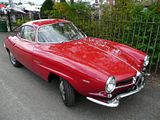
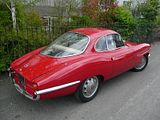
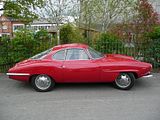
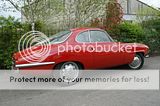 This 1900 Touring appears at many events, and I was interested to hear one of today’s attendees declare that he had owned the car in 1960! How he must regret having sold it, as it is absolutely stunning.
This 1900 Touring appears at many events, and I was interested to hear one of today’s attendees declare that he had owned the car in 1960! How he must regret having sold it, as it is absolutely stunning.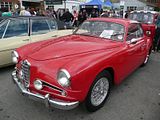
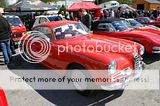 The 2600 was Alfa Romeo´s six-cylinder flagship produced from 1961 to 1968. It was the successor to the Alfa Romeo 2000, and there were two representatives: a coupe and a spider. Just wonderful.
The 2600 was Alfa Romeo´s six-cylinder flagship produced from 1961 to 1968. It was the successor to the Alfa Romeo 2000, and there were two representatives: a coupe and a spider. Just wonderful.
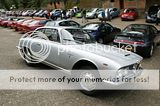
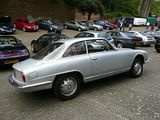
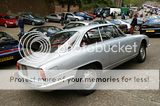
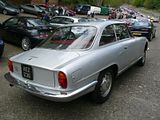
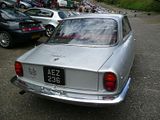


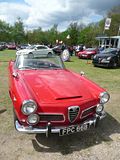
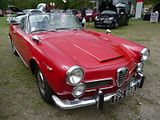
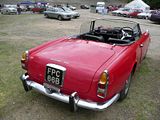
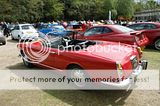 There were a couple of Montreals. a striking car celebrating its 40th anniversary this year.
There were a couple of Montreals. a striking car celebrating its 40th anniversary this year.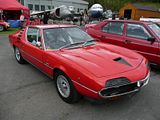
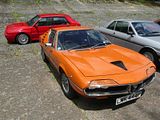
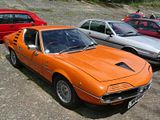
 This is a homemade vehicle in the style of a 1930s model, constructed by someone who couldn’t afford an original. I am not exactly sure of the engine though
This is a homemade vehicle in the style of a 1930s model, constructed by someone who couldn’t afford an original. I am not exactly sure of the engine though
 There were a few examples of the AlfaSud, with both regular cars and the Sprint coupe.
There were a few examples of the AlfaSud, with both regular cars and the Sprint coupe.
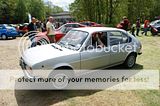
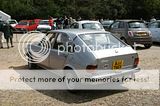
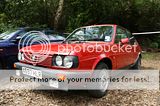


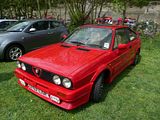
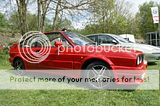 And its successor, the 33
And its successor, the 33

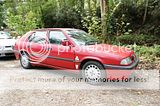 Alfetta was represented only by the GT Coupes, with none of the rare Berlinas on show.
Alfetta was represented only by the GT Coupes, with none of the rare Berlinas on show.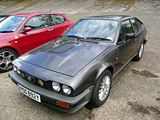
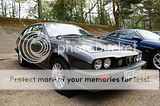


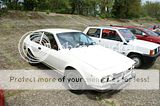 When did you last see one of these, an Alfa 90? These cars – essentially a reskinned Alfetta – were only on sale in the Uk for a couple of years from 1985 – and were not well reviewed at the time, and sold in tiny numbers. it is believed that there are less than 10 survivors and even those are mostly far from pristine. This one was far from that condition, too, but it was good to see an example of Alfa’s less than finest hour.
When did you last see one of these, an Alfa 90? These cars – essentially a reskinned Alfetta – were only on sale in the Uk for a couple of years from 1985 – and were not well reviewed at the time, and sold in tiny numbers. it is believed that there are less than 10 survivors and even those are mostly far from pristine. This one was far from that condition, too, but it was good to see an example of Alfa’s less than finest hour.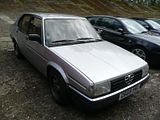
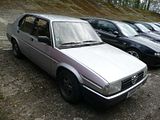


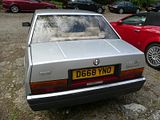

 Its successor was the 75, and this car has acquired something of a cult following now, not least because of the handling characteristics which make it an ideal cheap track car.
Its successor was the 75, and this car has acquired something of a cult following now, not least because of the handling characteristics which make it an ideal cheap track car.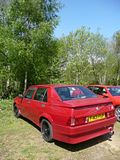


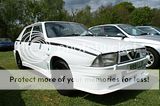

 After bemoaning how few 164s you see, there were several at this event. None of them was really pristine, but at least it is good to know that there are still a few around!
After bemoaning how few 164s you see, there were several at this event. None of them was really pristine, but at least it is good to know that there are still a few around!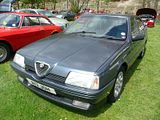
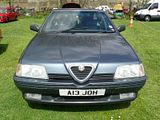
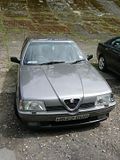

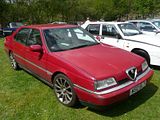
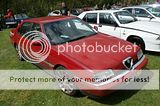
 The 145 and 146 is now a stalwart at Alfa events and there was a good variety of these characterful cars on show.
The 145 and 146 is now a stalwart at Alfa events and there was a good variety of these characterful cars on show.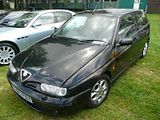
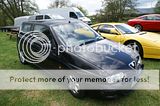
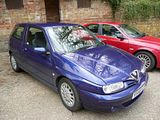
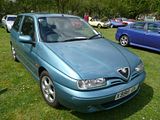
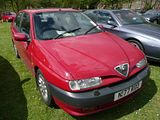
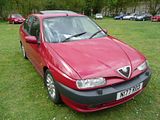
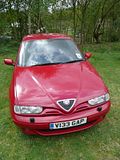

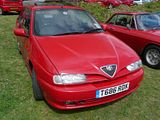
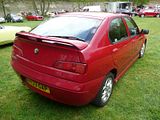 Plenty of the 155 models, too.
Plenty of the 155 models, too.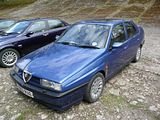

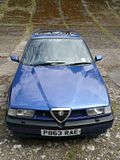
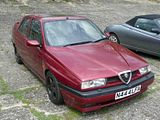
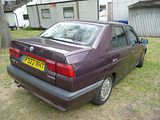


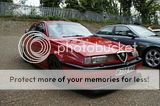

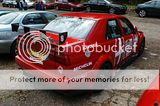 And 156s.
And 156s.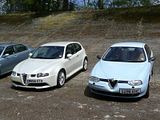
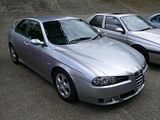

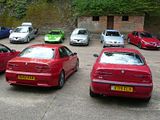
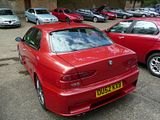
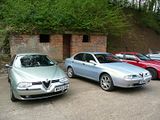


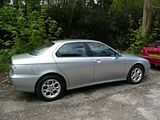
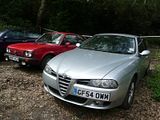
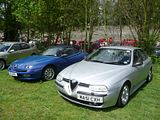
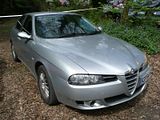
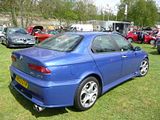

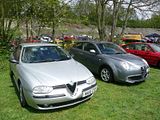
 And 147s.
And 147s.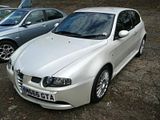
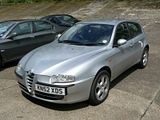
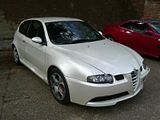
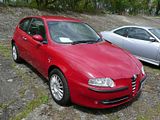
 And even the 166, a car now being appreciated for what it is – a characterful large saloon clothed in an elegant body
And even the 166, a car now being appreciated for what it is – a characterful large saloon clothed in an elegant body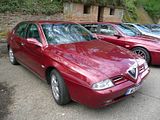
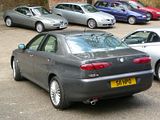
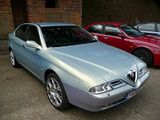

 Plenty of the GT models, too, as you would expect.
Plenty of the GT models, too, as you would expect.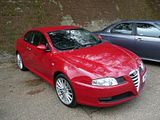
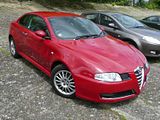
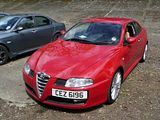
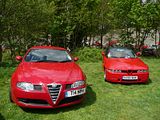
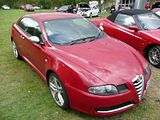
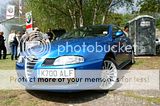 As evidenced by the events of the last couple of weeks, the GTV and Spider cars have an enthusiastic following, and several of these cars were at the show.
As evidenced by the events of the last couple of weeks, the GTV and Spider cars have an enthusiastic following, and several of these cars were at the show.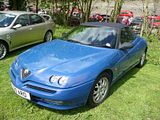

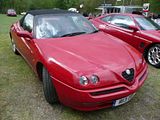 There were a few of the earlier 105 series GTVs, too, and a few of the Duetto/Spider cars of a similar vintage.
There were a few of the earlier 105 series GTVs, too, and a few of the Duetto/Spider cars of a similar vintage.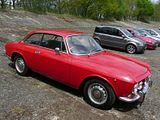
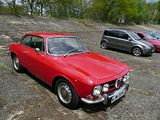
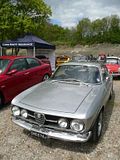
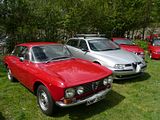
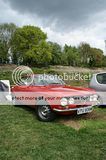
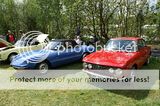
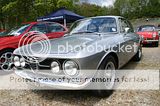
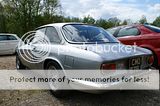
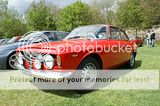
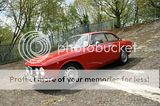


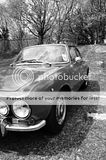

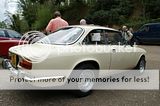
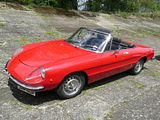
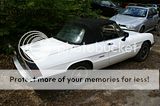

 There was but one lone SZ.
There was but one lone SZ.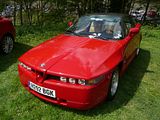
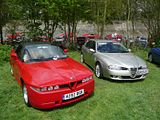
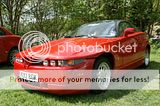
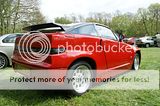 This one-off is a regular attendee at this event. It “qualifies”, as it has an Alfa engine.
This one-off is a regular attendee at this event. It “qualifies”, as it has an Alfa engine.
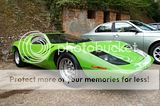 There was an 8C Competizione Spider that was attracting a lot of attention – not all of it from small children.
There was an 8C Competizione Spider that was attracting a lot of attention – not all of it from small children.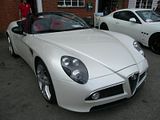
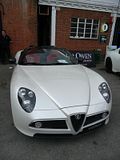
 The local dealer had a representative sample of the current range on show, and plenty of proud owners had also brought along their current cars.
The local dealer had a representative sample of the current range on show, and plenty of proud owners had also brought along their current cars.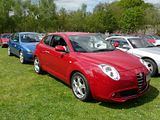

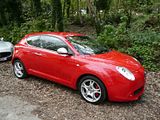
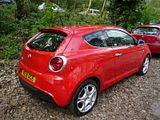



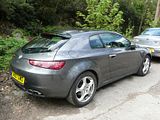
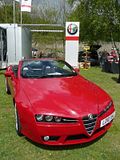
 AUTOBIANCHI
AUTOBIANCHIJust one car, an A112, which we have seen at this event before.
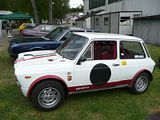
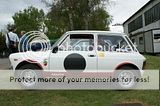 de TOMASO
de TOMASOOne of the many stars of the day was this striking Mangusta. Precursor to the far better known Pantera, this mid-engined car was made in small quantities in the 1960s. Stunning!
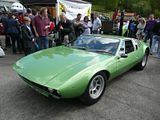
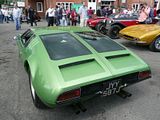
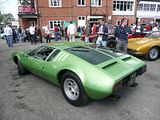
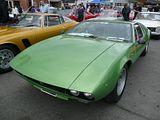

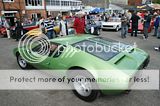
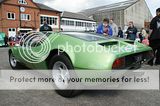
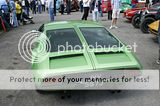
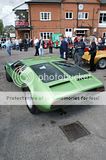
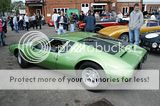 And here is the successor car, the long-running Pantera:
And here is the successor car, the long-running Pantera: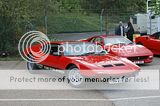
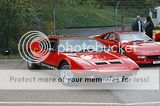

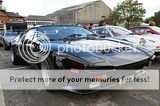

 FERRARI
FERRARIWhere to begin? Last year there were over 200 Ferrari at this event, and I would estimate that in 2010 there were even more than that.
Star for many people was the 458 Italia, making one of its first appearances in the UK.
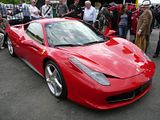
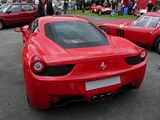

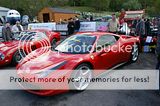




 This 290MM, the very car driven by Fangio in the 1956 Mille Miglia, was also attracting a lot of attention.
This 290MM, the very car driven by Fangio in the 1956 Mille Miglia, was also attracting a lot of attention.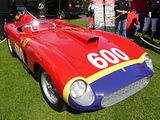
 Further reflecting Ferrari’s racing heritage, there was not one, but two of the iconic P330 models from the late 1960s.
Further reflecting Ferrari’s racing heritage, there was not one, but two of the iconic P330 models from the late 1960s.

 A replica 250 GTO
A replica 250 GTO
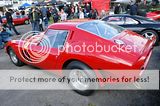 There were examples of all three of Ferrari’s most recent “halo” cars, the F40, F50 and Enzo. Although no-one could decry any of them, it was interesting to observe that it is still the F40 of the trio that seems to generate the most attention, and the F50s and Enzo were relatively ignored
There were examples of all three of Ferrari’s most recent “halo” cars, the F40, F50 and Enzo. Although no-one could decry any of them, it was interesting to observe that it is still the F40 of the trio that seems to generate the most attention, and the F50s and Enzo were relatively ignored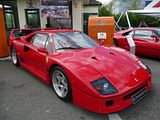


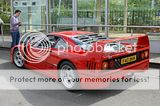
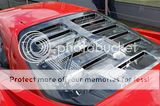
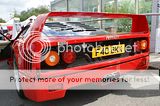



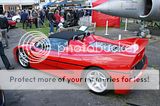

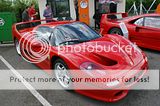

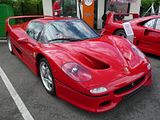

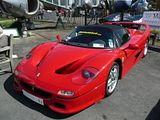

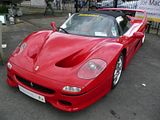
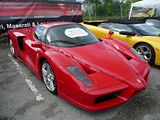
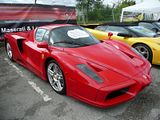
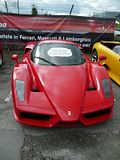

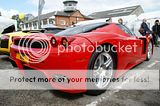
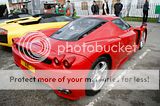 Precursor to these cars was the 288 GTO, a lovely lovely car. You could have taken this one in exchange for just £450,000. I am sure that the price of these cars is only going to go in one direction, and it will not be down!
Precursor to these cars was the 288 GTO, a lovely lovely car. You could have taken this one in exchange for just £450,000. I am sure that the price of these cars is only going to go in one direction, and it will not be down!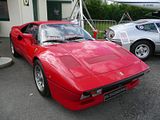
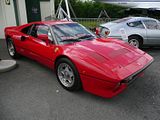
 There were only a couple of other older Ferrari at the event, but what they lacked in number, they made up for in desirability, with a 275 GTB and a 330 GT to enjoy.
There were only a couple of other older Ferrari at the event, but what they lacked in number, they made up for in desirability, with a 275 GTB and a 330 GT to enjoy.

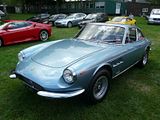
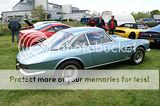
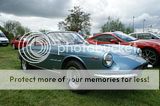 Examples of every Ferrari type from the mid 1970s were present, thus providing an excellent opportunity to see the evolution of the marque and to form your own opinion of whether the latest cars are as beautiful or as desirable as the older ones. What could be more desirable than the Daytona? In the mid 1970s, the answer was not much, I would guess.
Examples of every Ferrari type from the mid 1970s were present, thus providing an excellent opportunity to see the evolution of the marque and to form your own opinion of whether the latest cars are as beautiful or as desirable as the older ones. What could be more desirable than the Daytona? In the mid 1970s, the answer was not much, I would guess.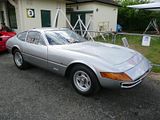
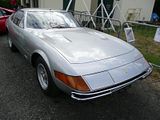

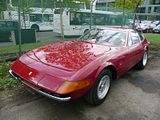
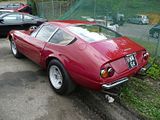


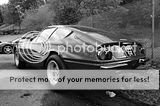
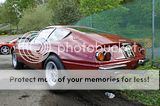
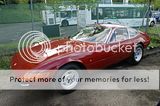 Perhaps its successor, the Berlinetta Boxer could claim that accolade? Certainly if you were playing Top Trumps in the late 1970s, this was the card you absolutely wanted! This car looks so small now. This is the later BB512 model that appeared in 1976.
Perhaps its successor, the Berlinetta Boxer could claim that accolade? Certainly if you were playing Top Trumps in the late 1970s, this was the card you absolutely wanted! This car looks so small now. This is the later BB512 model that appeared in 1976.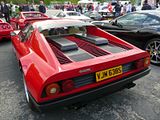

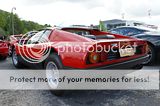 The Testarossa was the dramatic replacement for this car, stunning everyone when it first appeared in 1984.
The Testarossa was the dramatic replacement for this car, stunning everyone when it first appeared in 1984.

 Although the purists lamented the end of the rear engined 12 cylinder tradition with the launch of the front engined 550 model in 1996, few could dispute that this was anything other than one of the true Greats.
Although the purists lamented the end of the rear engined 12 cylinder tradition with the launch of the front engined 550 model in 1996, few could dispute that this was anything other than one of the true Greats.

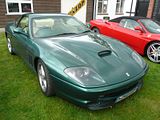

 There had been a front engine V12 car before this, the 365 GT4, which became the 400 and later the 412 and there were a couple of these high speed tourers at the event.
There had been a front engine V12 car before this, the 365 GT4, which became the 400 and later the 412 and there were a couple of these high speed tourers at the event.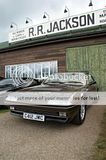
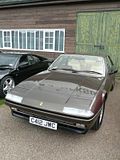
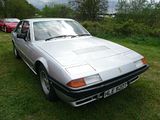
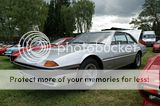 246 GT ‘Dino’
246 GT ‘Dino’
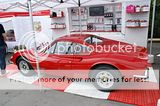 When the Dino 308 GT4 first appeared, many complained it was not a true Ferrari, and for years it has struggled to retain popularity. That is changing, finally, and these cars are getting more valuable by the month.
When the Dino 308 GT4 first appeared, many complained it was not a true Ferrari, and for years it has struggled to retain popularity. That is changing, finally, and these cars are getting more valuable by the month.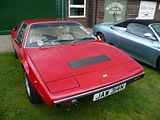
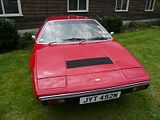
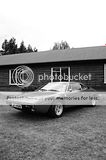

 Its successor, the Mondial has fared little better, and whilst the early cars were probably not all that good, Ferrari refined and improved the car out of all recognition during its 10 year production life.
Its successor, the Mondial has fared little better, and whilst the early cars were probably not all that good, Ferrari refined and improved the car out of all recognition during its 10 year production life.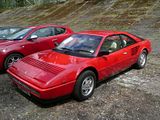
 The 308/328 range of cars are much loved by everyone and there were several of these in attendance.
The 308/328 range of cars are much loved by everyone and there were several of these in attendance.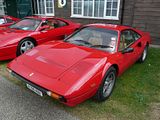
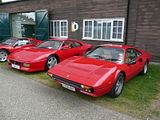

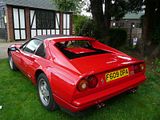
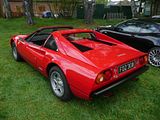
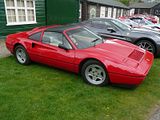
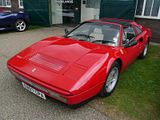
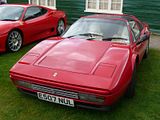
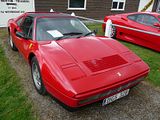
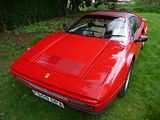

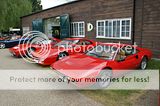



 348
348 
 Proving that you can make the proverbial silk purses out of the relative sow’s ear was the F355, widely regarded as a triumph after the relatively disappointing 348 car.
Proving that you can make the proverbial silk purses out of the relative sow’s ear was the F355, widely regarded as a triumph after the relatively disappointing 348 car.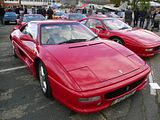
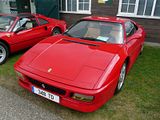
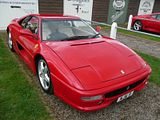


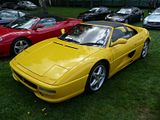

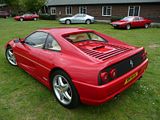

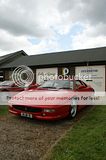 History will doubtless record that the 360 and 430 models were among the most successful Ferrari ever, and there were certainly plenty of these cars at the event.
History will doubtless record that the 360 and 430 models were among the most successful Ferrari ever, and there were certainly plenty of these cars at the event.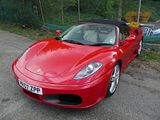
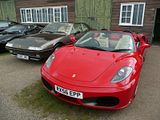
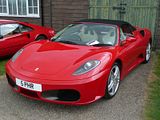
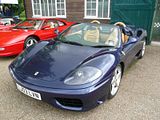
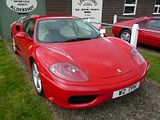
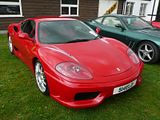

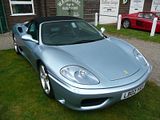

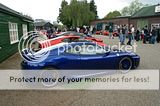

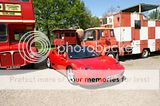
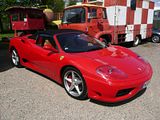
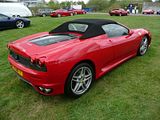
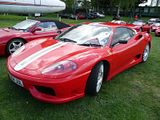



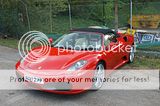



 I do like the current 12 cylinder cars, the 612 Scaglietti and especially the 599 GTB. There were several examples of both on show.
I do like the current 12 cylinder cars, the 612 Scaglietti and especially the 599 GTB. There were several examples of both on show.



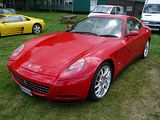
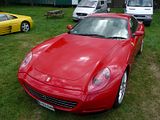
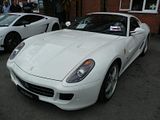

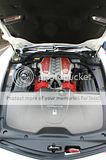

 Antecedent to the former of these was the 456 and this is a gorgeous design that still looks stunning nearly 20 years after its debut.
Antecedent to the former of these was the 456 and this is a gorgeous design that still looks stunning nearly 20 years after its debut.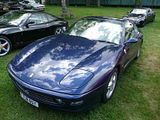


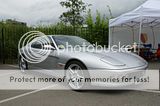
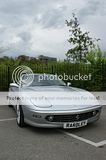
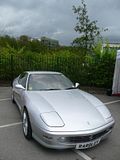
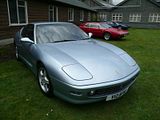
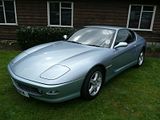
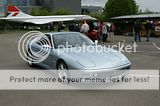 There were a couple of the latest California models, and I remain less than convinced about this car, especially in grey. The fact that the car was truly filthy did not help its cause.
There were a couple of the latest California models, and I remain less than convinced about this car, especially in grey. The fact that the car was truly filthy did not help its cause.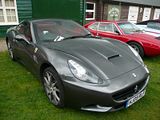
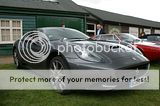
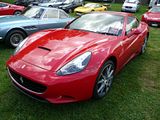


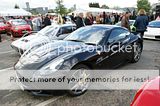
 FIAT
FIATThe 500 Club had a huge number of cars to see, though I was slightly surprised that there was but a sole pre-war example of the initial Topolino.

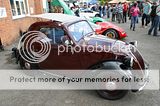
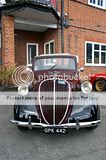
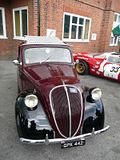 There were plenty of examples of the Nuova 500, which is hardly a surprise as this little car is loved the world over. and a good number of them have survived. There were even a couple of the cute Vignale Gamine cars.
There were plenty of examples of the Nuova 500, which is hardly a surprise as this little car is loved the world over. and a good number of them have survived. There were even a couple of the cute Vignale Gamine cars.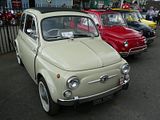
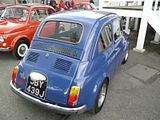
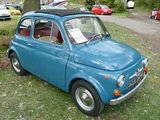


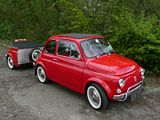
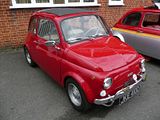
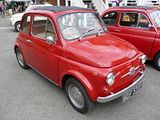
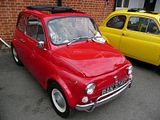
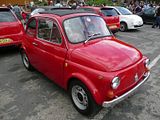
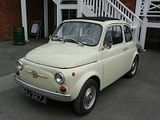
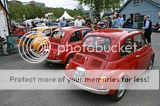
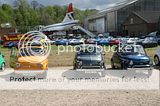
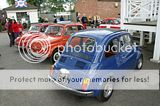
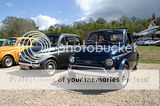
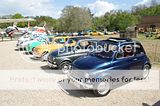
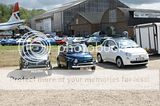
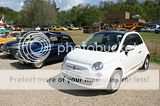
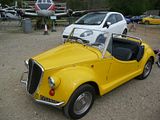
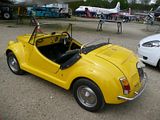
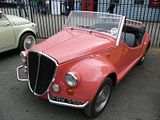
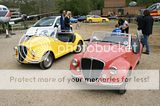 Its successor, the 126, never really captured the public’s imagination in the same way, but the car does have its followers and there were a few examples on display.
Its successor, the 126, never really captured the public’s imagination in the same way, but the car does have its followers and there were a few examples on display.
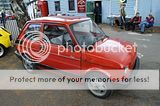
 This 600, with trim by Viotti is a stalwart at events in the south of England, and is a wonderful reminder of days gone by.
This 600, with trim by Viotti is a stalwart at events in the south of England, and is a wonderful reminder of days gone by.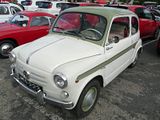
 900 Familiare Van – a sort of early People Carrier
900 Familiare Van – a sort of early People Carrier No Fiat display is complete without a few examples of the utterly lovely Dino, and there were a few of these cars in attendance.
No Fiat display is complete without a few examples of the utterly lovely Dino, and there were a few of these cars in attendance.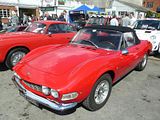

 Also lovely was this, as 1200 Spider. Far rarer than the also uncommon 1500/1600 models, this was just lovely.
Also lovely was this, as 1200 Spider. Far rarer than the also uncommon 1500/1600 models, this was just lovely.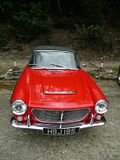
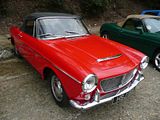
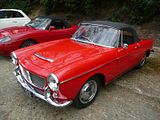
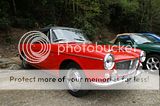 124 Spiders
124 Spiders
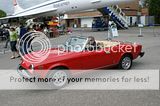 I have seen this 125 before. Thanks to a feature in the current issue of “Classic Cars”, I can now tell you that there are believed to be just 5 such survivors in the UK. In essence this was a more powerful and more luxurious big brother to the popular 124 family saloon of the 1960s, and could be construed a sort of 3 series of its time. The design was then exported to Poland where it staged a reappearance as the Polski-Fiat and later the FSO, at which point its reputation sunk further and faster than you could imagine. Hence, few people now would recognise the car for what it was when new.
I have seen this 125 before. Thanks to a feature in the current issue of “Classic Cars”, I can now tell you that there are believed to be just 5 such survivors in the UK. In essence this was a more powerful and more luxurious big brother to the popular 124 family saloon of the 1960s, and could be construed a sort of 3 series of its time. The design was then exported to Poland where it staged a reappearance as the Polski-Fiat and later the FSO, at which point its reputation sunk further and faster than you could imagine. Hence, few people now would recognise the car for what it was when new.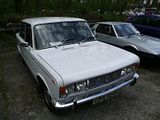

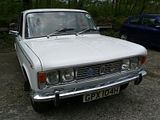 Other Fiat rarities included these: an 850 coupe, a 128 Coupe, the 128 3P, a late model 124 Coupe, the gorgeous 130 Coupe and a trio of 131 Mirafiori models
Other Fiat rarities included these: an 850 coupe, a 128 Coupe, the 128 3P, a late model 124 Coupe, the gorgeous 130 Coupe and a trio of 131 Mirafiori models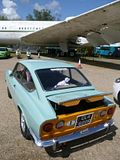
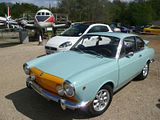


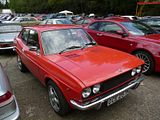
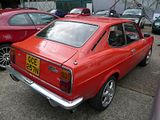
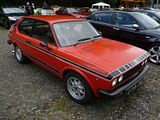
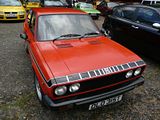
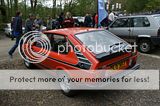
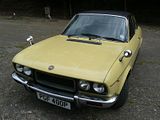
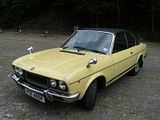
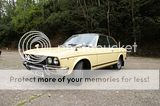
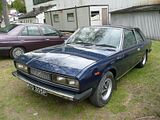
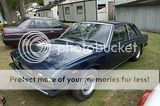
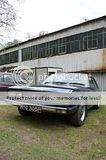
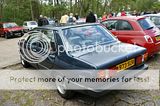 The 127 is widely credited with being one of the cars to popularise the concept of the “supermini” and these cars were a very common sight on the roads of Europe. Very few have survived and most of the cars you see now are the Sporting models, so to see a bottom of the range 900 is a rarity indeed. Here is just such a car.
The 127 is widely credited with being one of the cars to popularise the concept of the “supermini” and these cars were a very common sight on the roads of Europe. Very few have survived and most of the cars you see now are the Sporting models, so to see a bottom of the range 900 is a rarity indeed. Here is just such a car.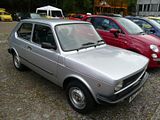
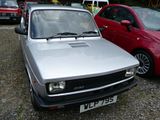 No such survival problem for the Fiat Coupe. I would estimate that there were over 50 of these charismatic Bangle-styled cars at the show. Truly a classic almost before production ceased, these cars are well loved, and rightly so.
No such survival problem for the Fiat Coupe. I would estimate that there were over 50 of these charismatic Bangle-styled cars at the show. Truly a classic almost before production ceased, these cars are well loved, and rightly so.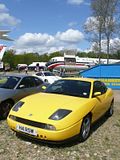
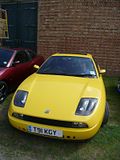
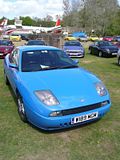
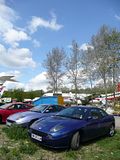

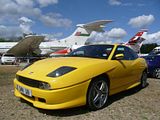
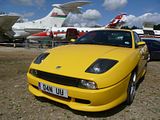
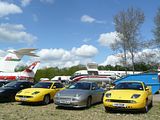



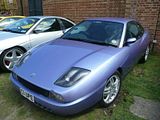
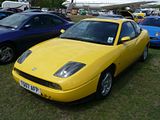
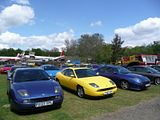

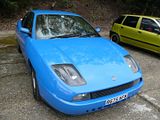
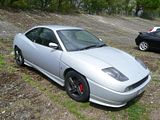
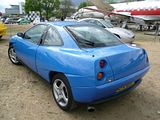

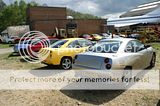
 In their own way, so are the tiny Cinquecento and Seicento models from the recent past, with plenty of these to see.
In their own way, so are the tiny Cinquecento and Seicento models from the recent past, with plenty of these to see.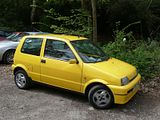
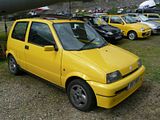
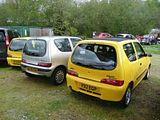

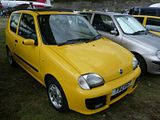
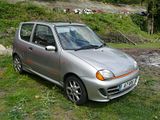
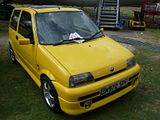 Not withstanding the fact that over 500,000 of the latest 500 have now been produced, I am sure this car will also remain popular for many years, and there were numerous of these cars at the event, including one of the special Tributo Ferrari models.
Not withstanding the fact that over 500,000 of the latest 500 have now been produced, I am sure this car will also remain popular for many years, and there were numerous of these cars at the event, including one of the special Tributo Ferrari models.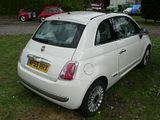
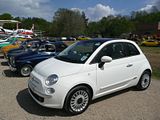
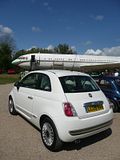
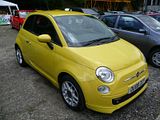
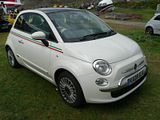
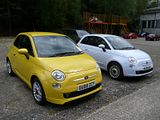
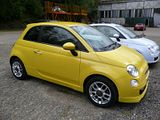
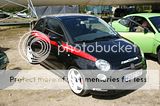
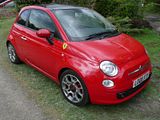 The Barchetta never sold in large numbers in the UK, but the owners love them, and who can dispute why when the car looks this good.
The Barchetta never sold in large numbers in the UK, but the owners love them, and who can dispute why when the car looks this good.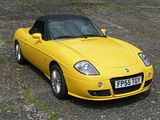
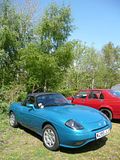

 Mind you, a car does not have to look good to be loved, as the Multipla Owners Club proves!
Mind you, a car does not have to look good to be loved, as the Multipla Owners Club proves!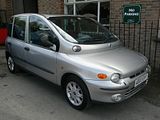 There are enthusiast followings for just about everything, and we found the prides and joy of Brava and Marea and even some Fiat Stilo owners on display.
There are enthusiast followings for just about everything, and we found the prides and joy of Brava and Marea and even some Fiat Stilo owners on display.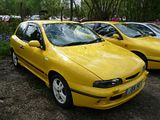

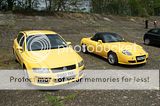

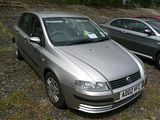
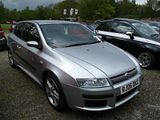
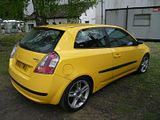
 Several of the Strada cars staged an appearance – most of them from the sporting end of the range.
Several of the Strada cars staged an appearance – most of them from the sporting end of the range.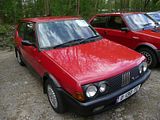

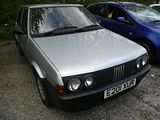
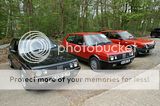
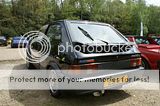 Successor to this car was the Tipo, and despite its fully galvanised body which cured the rust problems of the Strada, these cars are very rare as well now. There was one Sedicivalvole on show.
Successor to this car was the Tipo, and despite its fully galvanised body which cured the rust problems of the Strada, these cars are very rare as well now. There was one Sedicivalvole on show.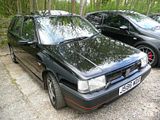
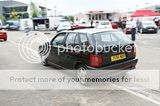 There were far more of the first generation Panda than I have seen at Italian car events, as well as a number of the current model.
There were far more of the first generation Panda than I have seen at Italian car events, as well as a number of the current model.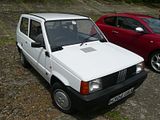
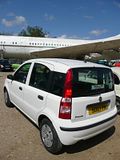
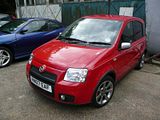
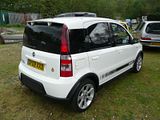
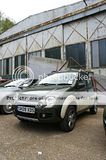 Plenty of the three generations of Punto to see, too. Most of the early models seem to have been rather personalised by the younger generation (!).
Plenty of the three generations of Punto to see, too. Most of the early models seem to have been rather personalised by the younger generation (!).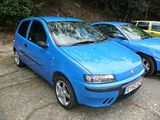
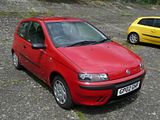
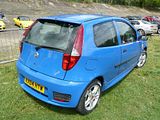
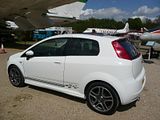
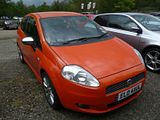
 There were three Uno Turbos, grouped up together
There were three Uno Turbos, grouped up together There were a good few X1/9s on show, too. Most of them seem to have eluded my camera.
There were a good few X1/9s on show, too. Most of them seem to have eluded my camera.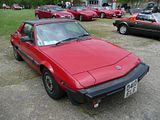
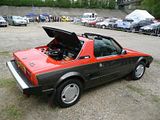
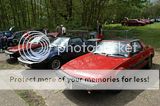
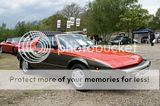 Croma
Croma The new Fiat Doblo is not exactly a handsome device, but I am sure it is very practical!
The new Fiat Doblo is not exactly a handsome device, but I am sure it is very practical!
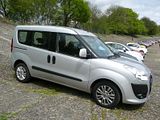
 HR Owen collection
HR Owen collection 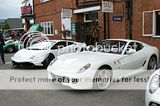
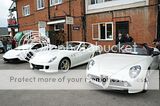
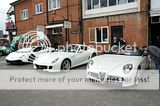

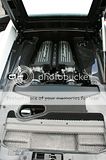
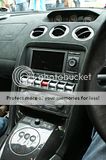

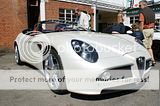

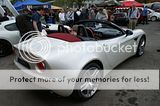

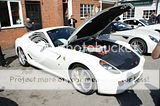


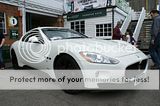
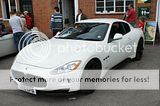
 INNOCENTI
INNOCENTIThis is one of just three such cars in the UK, a very pretty coupe model built over Austin Healey Sprite mechanicals. Only a few of these cars were ever made when new, as they were expensive, and whilst getting body parts now is mission impossible, maintaining the mechanicals has never been easier. The same owner has all three of the UK cars. Lucky chap!
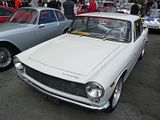 ISO
ISOI’ve seen the gold coloured Grifo at a number of events in the last couple of years, following a fastidious restoration that was described when the car featured in an article in Classic and Sports Car. It is a truly fabulous car. What a treat to see a sister car, the red one at the same event. It was equally lovely.
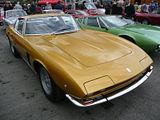
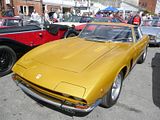
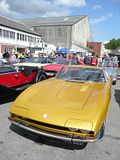
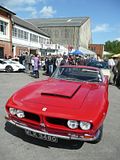
 The Lele was the last car that was produced bearing the Iso name, and was a high speed four seater tourer that looked a whole lot better than it actually was.
The Lele was the last car that was produced bearing the Iso name, and was a high speed four seater tourer that looked a whole lot better than it actually was.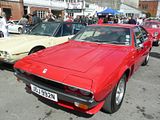
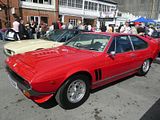
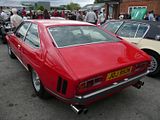

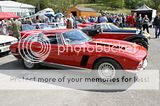
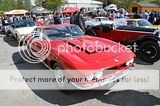 For those for whom the Lele did not have enough space, Iso also made a four door car, the Fidia, and this example is also a stalwart of events such as this one.
For those for whom the Lele did not have enough space, Iso also made a four door car, the Fidia, and this example is also a stalwart of events such as this one.
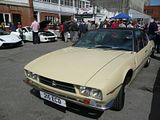 LAMBORGHINI
LAMBORGHINIThere was a good display of Lamborghini parked up in the central area of the event, which we walked past early on, distracted by the adjacent Ferraris. When we returned, we saw some of the following:
Miura
 Countach
Countach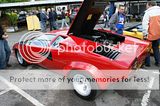 Diablo
Diablo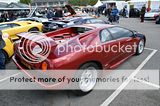

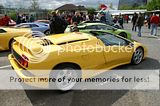
 Murcielago
Murcielago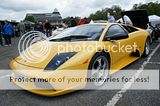
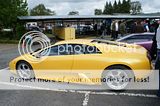
 Gallardo
Gallardo
 LP560-4
LP560-4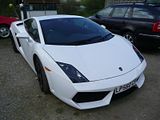
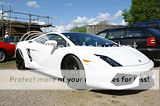

 And the brand new Gallardo SuperLeggera
And the brand new Gallardo SuperLeggera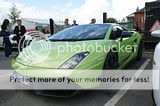
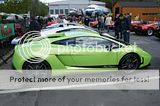
 The Uracco was Lamborghini’s idea of a more affordable car in the mid 1970s. At the time, it was actually not that well rated, but it is, in my opinion, a stunning machine to look at, and I would jump at the chance do drive or own one (but then that would apply to just about any car present at this event!).
The Uracco was Lamborghini’s idea of a more affordable car in the mid 1970s. At the time, it was actually not that well rated, but it is, in my opinion, a stunning machine to look at, and I would jump at the chance do drive or own one (but then that would apply to just about any car present at this event!).

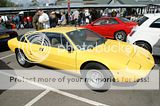
 Following their first attempt to build a four seater, namely the Espada, Lamborghini had another go in the mid 1970s with this the Jarama. These cars get far less attention than almost any other in Lamborghini’s heritage, but the styling is well judged and the mechanicals are as covetable as with any Lamborghini.
Following their first attempt to build a four seater, namely the Espada, Lamborghini had another go in the mid 1970s with this the Jarama. These cars get far less attention than almost any other in Lamborghini’s heritage, but the styling is well judged and the mechanicals are as covetable as with any Lamborghini.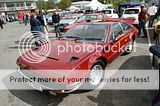
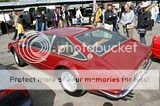
 By far the most unusual Lamborghini of the day, though, was this LM002. What a machine!
By far the most unusual Lamborghini of the day, though, was this LM002. What a machine!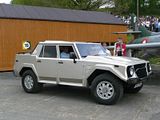
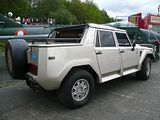
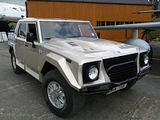
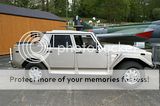




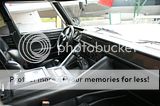 LANCIA
LANCIAThe Aurelia GT is widely regarded as being the first car to use the famous and now much abused Gran Turismo moniker. Many of these cars are now used for historic motor sport events where they are as much in their element as when used as a road car.
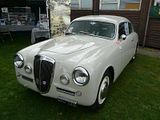
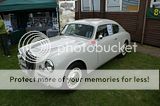
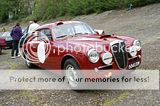 The Appia was Lancia’s entry level car in the 1950s and early 1960s and this Berlina is a rare survivor of an exquisitely engineered (and hence very costly) car.
The Appia was Lancia’s entry level car in the 1950s and early 1960s and this Berlina is a rare survivor of an exquisitely engineered (and hence very costly) car. It was succeeded by the Fulvia in 1963. Nowadays everyone remembers the lovely Coupe models, but there was also a Berlina model. Zagato produced a small number of dramatically different Coupes as well, and one of these was also on show.
It was succeeded by the Fulvia in 1963. Nowadays everyone remembers the lovely Coupe models, but there was also a Berlina model. Zagato produced a small number of dramatically different Coupes as well, and one of these was also on show.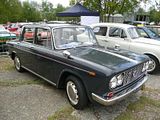
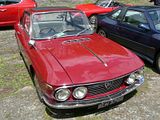
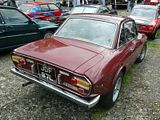
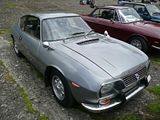
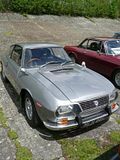

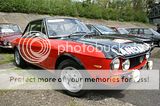
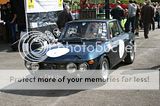
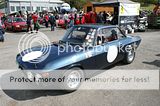 Hard to believe but in the 1970s, the Beta sold in far larger volume than the 3 series BMW. There were examples of all the different models at the show, from Berlina to Coupe, HPE, Spider and the MonteCarlo.
Hard to believe but in the 1970s, the Beta sold in far larger volume than the 3 series BMW. There were examples of all the different models at the show, from Berlina to Coupe, HPE, Spider and the MonteCarlo.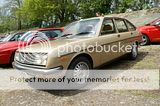
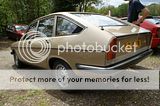
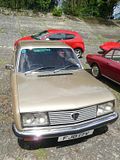



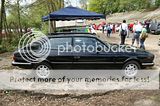
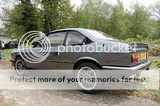

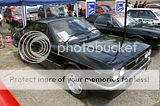
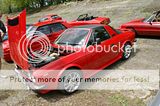
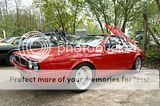
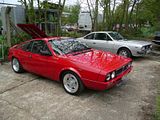
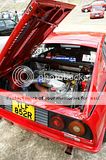 Stratos
Stratos
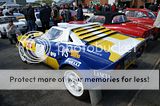 The Delta did well for Lancia in the 1980s and 1990s, fuelled by the success of the rally cars and the launch of the Integrale road cars.
The Delta did well for Lancia in the 1980s and 1990s, fuelled by the success of the rally cars and the launch of the Integrale road cars.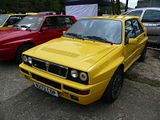
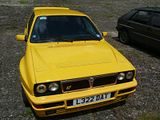
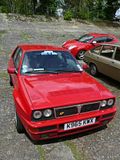

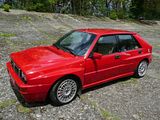
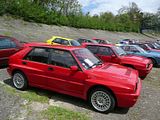
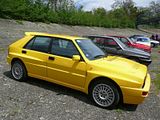



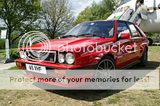
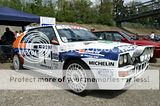
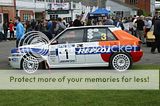 The Thema was Lancia’s flagship in the 1980s and the flagship of that range was the Ferrari engined 8.32. There was one such car at the show together with a standard Thema
The Thema was Lancia’s flagship in the 1980s and the flagship of that range was the Ferrari engined 8.32. There was one such car at the show together with a standard Thema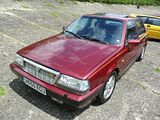
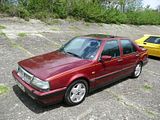

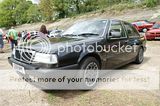 Previously, the top of the range Lancia had been the Gamma. Styling desirability was little compensation for the 4 cylinder engines and the subsequent reputation for overheating problems. Pity.
Previously, the top of the range Lancia had been the Gamma. Styling desirability was little compensation for the 4 cylinder engines and the subsequent reputation for overheating problems. Pity.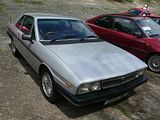
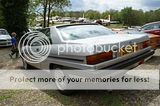
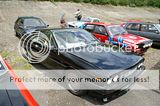 Before that, the Flaminia had been at the top of the Lancia tree. This Touring bodied Coupe is just gorgeous.
Before that, the Flaminia had been at the top of the Lancia tree. This Touring bodied Coupe is just gorgeous.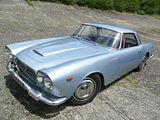
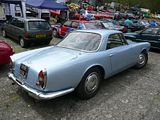
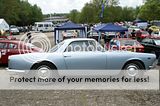 The Y10 was a stylish mini car launched in 1985.
The Y10 was a stylish mini car launched in 1985.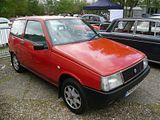
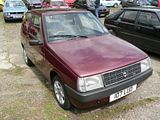 First time I’ve seen a 2000 HF Coupe for many a year. Shame, as these are lovely cars.
First time I’ve seen a 2000 HF Coupe for many a year. Shame, as these are lovely cars.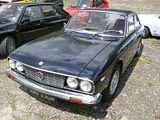
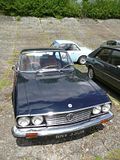
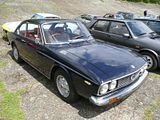 MASERATI
MASERATILate in the day I came across this, the 3500GT, the first “volume” road car that Maserati made. Volume is of course a relative term!
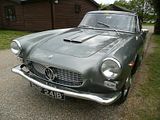
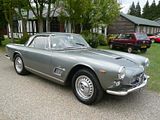


 In 1963, Maserati shocked everyone with their Quattroporte, a true 4 seater express quite unlike anything else on the market in concept.
In 1963, Maserati shocked everyone with their Quattroporte, a true 4 seater express quite unlike anything else on the market in concept.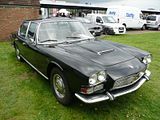
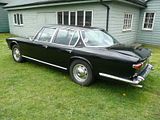
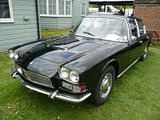
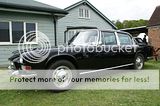
 The Merak was a pretty 1970s coupe, far better than the one memorably desecrated by a certain J Clarkson Esq in a Top Gear challenge.
The Merak was a pretty 1970s coupe, far better than the one memorably desecrated by a certain J Clarkson Esq in a Top Gear challenge.
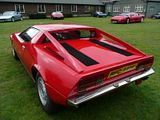
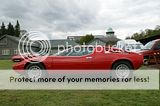 The Kyalami was little more than a Maserati engined version of the long running de Tomaso Longchamps, produced in small numbers and a rare sighting now.
The Kyalami was little more than a Maserati engined version of the long running de Tomaso Longchamps, produced in small numbers and a rare sighting now.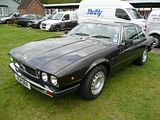
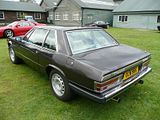
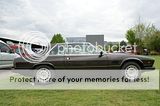
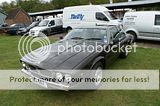
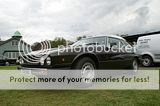 In 1982, Maserati announced the Biturbo, a car designed to sell in far larger quantity than any of their previous cars. Over the next 20 years, a bewildering array of different models were launched, and finally most of the limitations and irritations of those early cars were eradicated. These cars, badged Ghibli, are now well respected, and several of them were at the event along with the every limited production Shamal.
In 1982, Maserati announced the Biturbo, a car designed to sell in far larger quantity than any of their previous cars. Over the next 20 years, a bewildering array of different models were launched, and finally most of the limitations and irritations of those early cars were eradicated. These cars, badged Ghibli, are now well respected, and several of them were at the event along with the every limited production Shamal.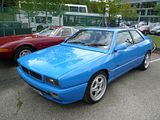

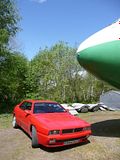

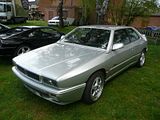
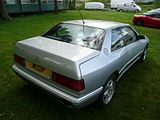

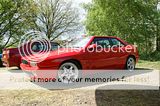
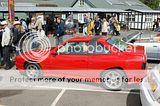
 The current Quattroporte has to be one of the most beautiful saloons on the market (or indeed, ever).
The current Quattroporte has to be one of the most beautiful saloons on the market (or indeed, ever).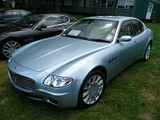
 The latest open top version of the GranTurismo, the GranCabrio was making one of its first UK appearances.
The latest open top version of the GranTurismo, the GranCabrio was making one of its first UK appearances.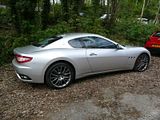




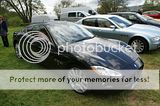

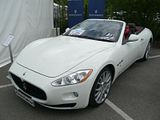
 MONTEVERDI
MONTEVERDIAlthough these cars are Swiss, no-one would ever quibble with their inclusion at a gathering such as this. One of these 375L High Speed Expresses is a regular, but today it was joined a second car. Not quite so immaculate, as a close-up inspection revealed, and the owner was only too ready to admit. He did also tell me that he believes that these two cars are now the only Monteverdi in the UK, as the handful of others that had been here have all gone back to Europe thanks to the weak pound making it attractive to take such cars back across the channel. So, enjoy the sight of 100% of the UK’s population of Monteverdi!
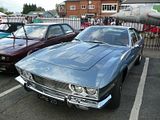
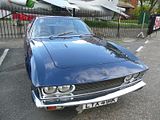
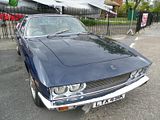
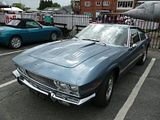
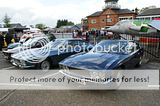
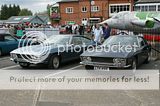

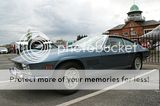
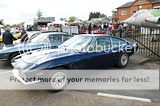
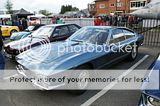 MORETTI
MORETTIThis was a car that I simply could not recognise. Not only have I never seen one, but I don’t believe I have ever seen a picture of one. Thankfully, the badging gave me the answers. A Moretti 850 Special, this elegant coupe is based on the rear engine Fiat 850, which specialist Moretti clothed in an even prettier body than the in-house Fiat Coupe offering. Very rare indeed.

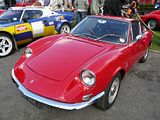
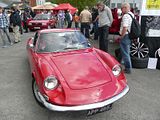
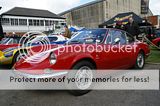
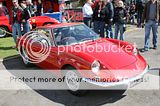
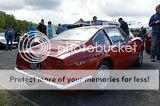 TRIUMPH ITALIA
TRIUMPH ITALIAThis was the same car as I had seen in Bristol the previous weekend. Based on the Triumph TR3, but fitted with a Vignale body and assembled by Touring in Italy. One of 42 survivors from an initial production of less than 350 cars, it was widely admired for being a stunning car.
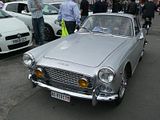
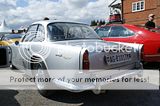 BIKESLots of Italian bikes, these are a MV Augusta F4 1000 and a Moto Guzzi Daytona from the late ’90’s. Sadly most of the others seem to of evaded my camera, including a Bimota and various Ducatis.
BIKESLots of Italian bikes, these are a MV Augusta F4 1000 and a Moto Guzzi Daytona from the late ’90’s. Sadly most of the others seem to of evaded my camera, including a Bimota and various Ducatis.
 NOT QUITE ITALIAN
NOT QUITE ITALIANI’m not sure how these 2 American cars managed to sneak in, but who is going to complain at the chance to see them? A Chrysler Newport and a Dodge.
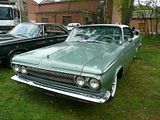
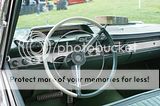

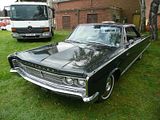

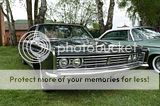
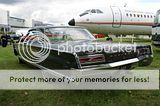 In the car park as we arrived was an Audi RS6 Avant and a Bentley Flying Spur
In the car park as we arrived was an Audi RS6 Avant and a Bentley Flying Spur


 A couple of the Brooklands vehicles
A couple of the Brooklands vehicles
 This was used to tow a Fiat 500! Overkill maybe?
This was used to tow a Fiat 500! Overkill maybe?
 There were a few well known faces in the crowd, including Vicki Butler Henderson
There were a few well known faces in the crowd, including Vicki Butler Henderson So, an absolutely Top Event. Hold your diaries for the 2011 event now!
So, an absolutely Top Event. Hold your diaries for the 2011 event now!2010-05-03 07:59:32








































































































































































































































































































































































































































































































































































































































































































































